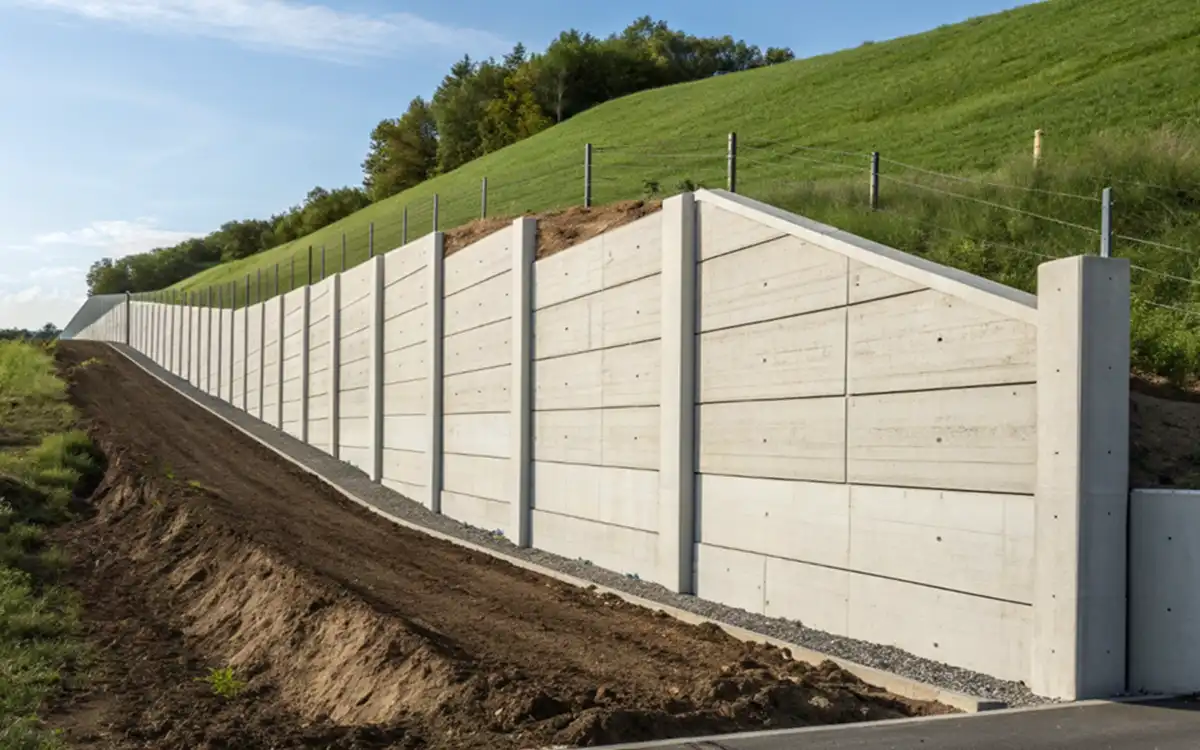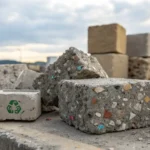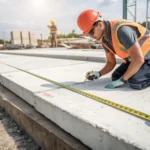Introduction
So what is a retaining wall? A retaining wall is a structural system that holds back soil or rock from a building, structure, or area. It is also responsible for holding soils in place, thus, preventing erosion, landslides and making land on slopes or uneven ground usable.
Creating usable and landscaped land, building or road construction, and road foundations are main uses for retaining walls. The use of advanced technology in construction has allowed improvement on the design and construction of retaining walls.
The annual use of precast concrete is one of the new advancements that construction technologists implemented in building retaining walls, it greatly enhanced the walls strength and design.
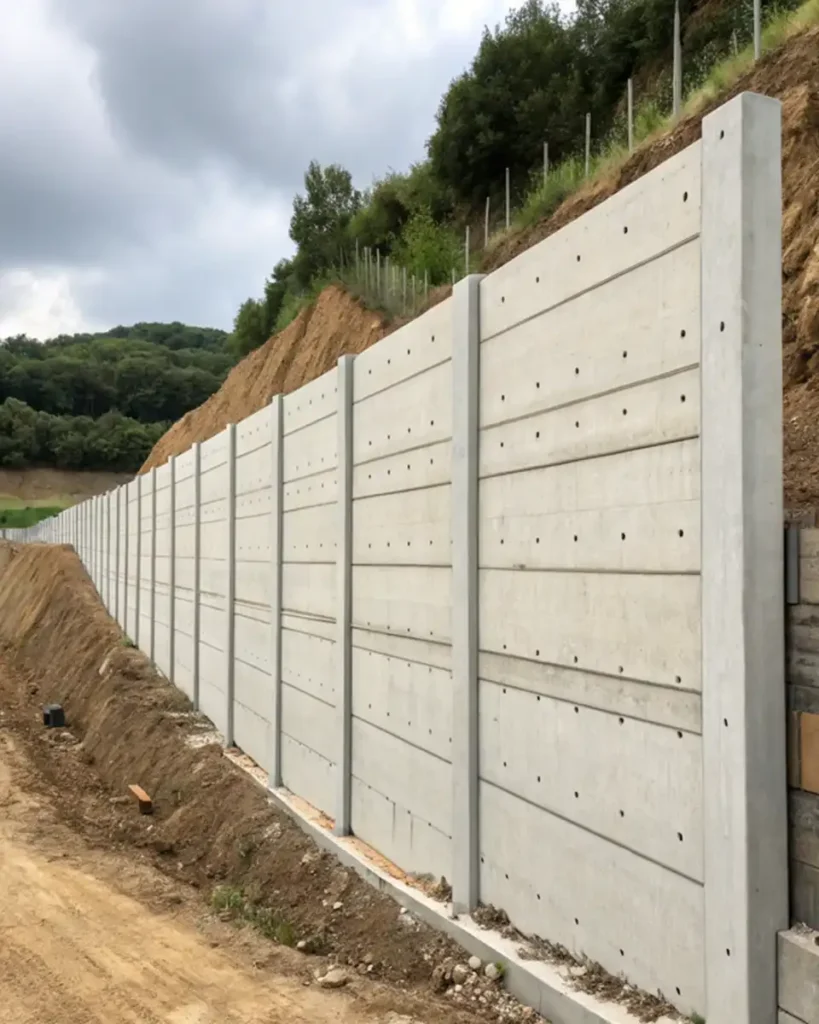
Understanding Retaining Walls-What Is a Retaining Wall?
They perform the dual function of a retaining wall. They prevent soil erosion and holds back slop soils. They redirect the lateral pressure of soil and absorb it. Landscapes and gardens also use retaining walls to define a space.
With the diverse functions of retaining walls and site conditions, movable and expandable retaining walls made of concrete, timber, and gabions can be constructed. The landscape and garden use of retaining walls is to create terraces, steps, and borders.
The use of sustainable and innovative materials for construction of modern retaining walls is to fulfill the design, environmental and structural requirements.
The use of recycled concrete, green concrete, and bio-based materials in wall construction are advancing technology building constructed walls to enhance the walls durability and strength while reducing coban foorprints.
How Precast Concrete Improves Retaining Walls
Precast concrete is created when concrete is molded and cured before installation on site. The method increases the strength and reliability of retaining walls in numerous ways.
What Is a Retaining Wall? Enhanced Quality Control: The factory conditions of precast concrete allow for temperature and moisture control and curing time supervision. This results in concrete of far better quality, durability, strength, and reduced defects than concrete cast on site.

- Increased Strength: Precast panels and blocks typically include rebar that provides tensile and shear strength. This steel reinforcement reduces the likelihood of cracking and provides long-lasting structural integrity.
- Variety of Designs and Forms: Precast concrete offers a wide range of designs for retaining walls. The walls can be block walls, large panels, or any combination that meets the structural and aesthetic needs of the site.
- Enhanced Speed of Construction: Having precast concrete modules reduces installation time and decreases site disruption and construction delays.
- Durability and Low Maintenance: High-quality precast concrete can last to over 50 years without major weather erosion and freeze-thaw erosion. It withstands weather better than many other materials.
Retaining Walls Built with Precast Concrete
| Feature | Description | Benefit |
| Factory Production | Concrete is cast and cured in a controlled facility | Consistent quality, strength |
| Steel Reinforcement | Incorporation of rebar or steel fibers | Increased tensile strength |
| Custom Molding | Ability to create blocks, panels, or decorative shapes | Design flexibility |
| Rapid Installation | Pre-made components delivered to site | Time and cost saving |
| Durability | Resistant to weather, erosion, and soil pressure | Long-lasting performance |
Different Types of Retaining Walls Built with What Is a Retaining Wall?
- Block Walls: Easy to assemble, these interlocking blocks creating a wall are made from precast concrete, which is why they are used for garden beds and low to medium height walls.
- Concrete Panel Walls: In commercial and infrastructural load bearing wall projects, large precast cement concrete panels are best suited, since they offer superior strength and stability.
- Segmental Retaining Walls: These walls are made of modular stacked precast units that are not glued but locked in place, and often internally reinforced to add strength.
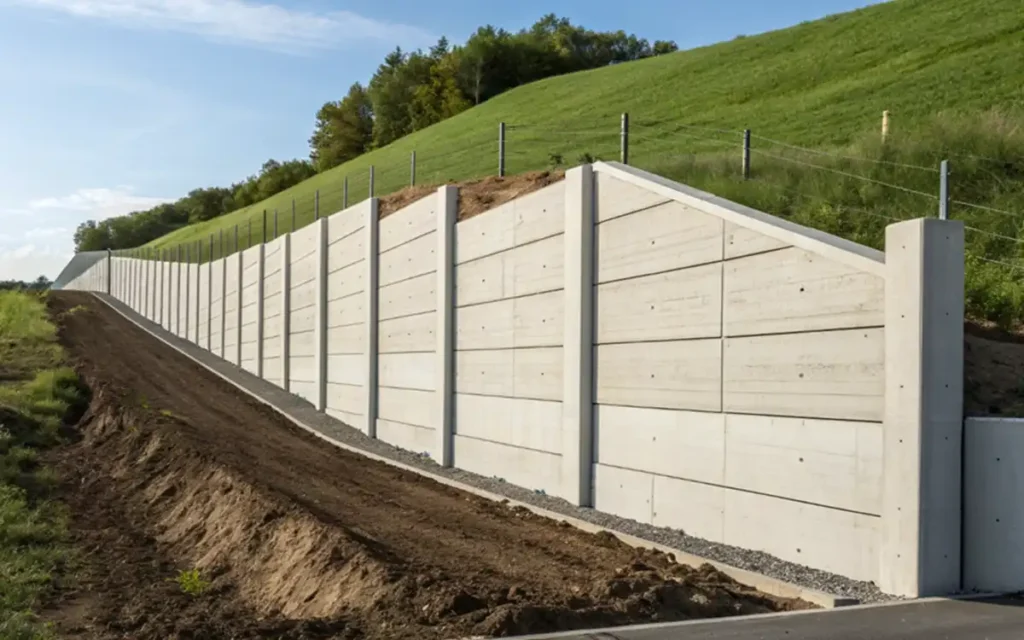
Conclusion
To conclude, answering the question “what is a retaining wall?” entails knowing that it is an important construction component built to level off earth and make sloped land safe and usable.
The invention of precast concrete has not only strengthened and enhanced the durability of retaining walls, but has also expanded their design and use. The ability to customize, use controlled production methods, and reinforce with steel offers much value in making precast concrete walls to withstand natural elements for years.
For individuals designing or servicing retaining walls, precast concrete is a dependable and modern approach reflective of the advancements of the year 2025.
For Repair and Services
1924 W Edward Ln, Milwaukee, WI 53209, United States
Phone: +14142855933
Email: [email protected]
